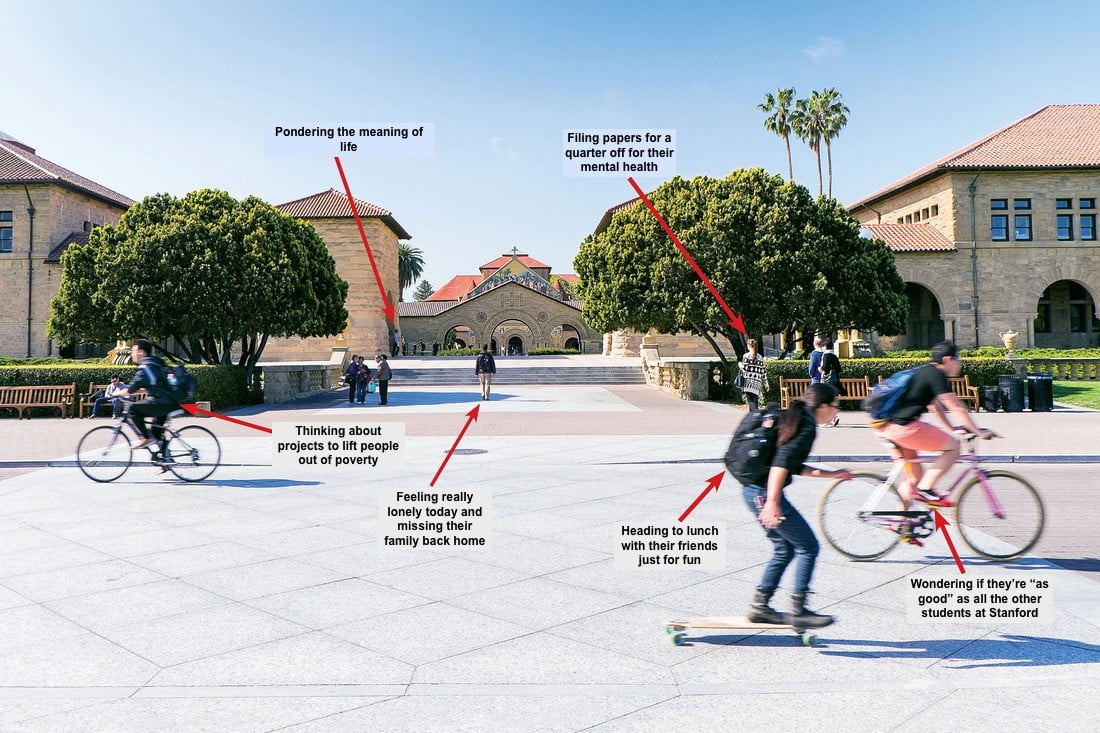NY Magazine recently published the article, “A cynic’s guide to killing it at Stanford: How to Network Your Way Through Stanford University.” The article is a (cringe-worthy) guide for how the ambitious incoming freshmen should navigate Stanford, what they dub a “finishing school for the burgeoning independent commonwealth of tech.”
The two of us were — gasp! — Stanford literature and history majors, respectively. What a humanities major teaches you is that myths are important and stories have power. Articles like the NY Mag article perpetuate a myth about Stanford that we hear over and over and over again — not only that it is full of “techies,” but that those techies care about self-enrichment, networking and personal success only.
Stanford is what you make of it. Yes, it is located in Silicon Valley. And yes, tech and tech culture permeate the campus and student body. We will not pretend like the world the article describes does not exist at Stanford. In fact, part of why it irritates is because it is correct.
But we love Stanford. And when you love something, you celebrate its positives. You highlight the good. And most importantly, you try to make it better. You can absolutely take “How to Major in Unicorn” as your guiding star and network your way through the University.
But we hope you don’t.
People usually associate Stanford with grads like Peter Thiel, Larry Page and Evan Spiegel, who epitomize “drop-out tech culture!” But Stanford actually has a rich tapestry of graduates who have gone on to impact the world (and perhaps less problematically than Thiel, Page and Spiegel).
Our alumni include the astronauts Sally Ride and Mae Jemison, Supreme Court Justices Sandra Day O’Connor, William Rehnquist, Anthony Kennedy and Stephen Breyer (who majored in history, by the way). Michael McFaul and Susan Rice, who served as President Obama’s Ambassador to Russia and National Security Advisor, respectively, were classmates at Stanford. They both were involved in activism to pressure the University to divest from South Africa during Apartheid — and Stanford students helped catalyze anti-Apartheid activism across the world. Two presidential candidates, Cory Booker and Julian Castro, are Stanford graduates — as is MSNBC journalist Rachel Maddow. Sterling K. Brown, an Emmy and Golden Globe winning actor known for his leading role in “This is Us,” majored in theater and performance studies. We could go on, but the point is this: Stanford is what you make of it.
What the NY Mag article gets right is that getting into Stanford is a one-way ticket into the privileged elite of the United States. The second you are admitted to Stanford, you will have privilege and you will have power. Over the next four years, you will watch your friends join McKinsey, and Goldman, and Google, and Palantir, and Facebook, and Blackrock, and all of these places where the power and prestige of a Stanford degree matter. You will wonder — should I do that too?
This is not a decision you will make tomorrow. There are a series of decisions you will face at Stanford, about who you want to be and what you want to do in the world. It’s easy to keep climbing the ladder. And while Stanford will tell you that you are amazing, it will not tell you that you have responsibilities.
But you do. You made it into Stanford on the backs of others — of your family, of your community, of a deeply inequitable and unjust society, of systemic racism and classism, of oppression and violence. You have a responsibility to the world that you live in — to make it a better place, to the best of your ability, in the best way you know how.
The NY Mag article invites you to ask yourself the question, “What should I do for me?” We challenge you to ask yourself the questions, “What responsibility do I have to others? How are the gifts and privileges that have been afforded best utilized to help others outside myself?”
So, incoming freshman: Stay humble. Listen. Listen, listen, listen and learn. And, if we might offer some practical advice, sign up for HUMRTS 101 and visit the Handa Center for Human Rights at Stanford. The human rights community was the community that saved us, where we found people who valued and cared about the same things we did. The community you need is at Stanford — you just have to go out and find it, and maybe yourself along the way.
We’ve curated a list of advice for incoming Stanford students: “An Optimist’s Guide to Finding Meaning at Stanford: How to Find the Beauty On Your Way Through.” We hope it will provide some useful tips and grounding advice as you navigate your way through Stanford, and through life.
— Alina Utrata ’17 and Ibrahim Bharmal ’17
A version of this article first appeared on Medium.
